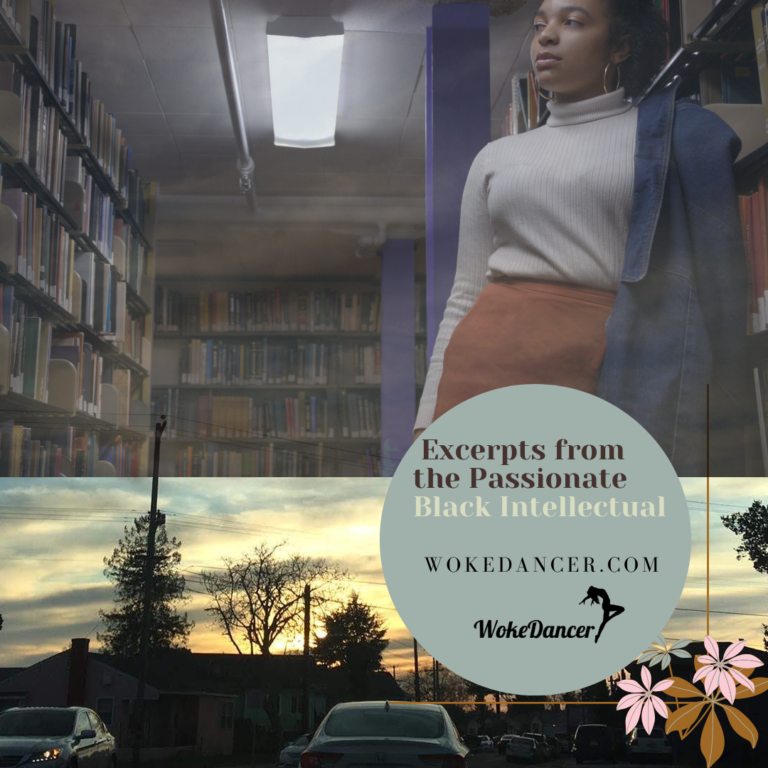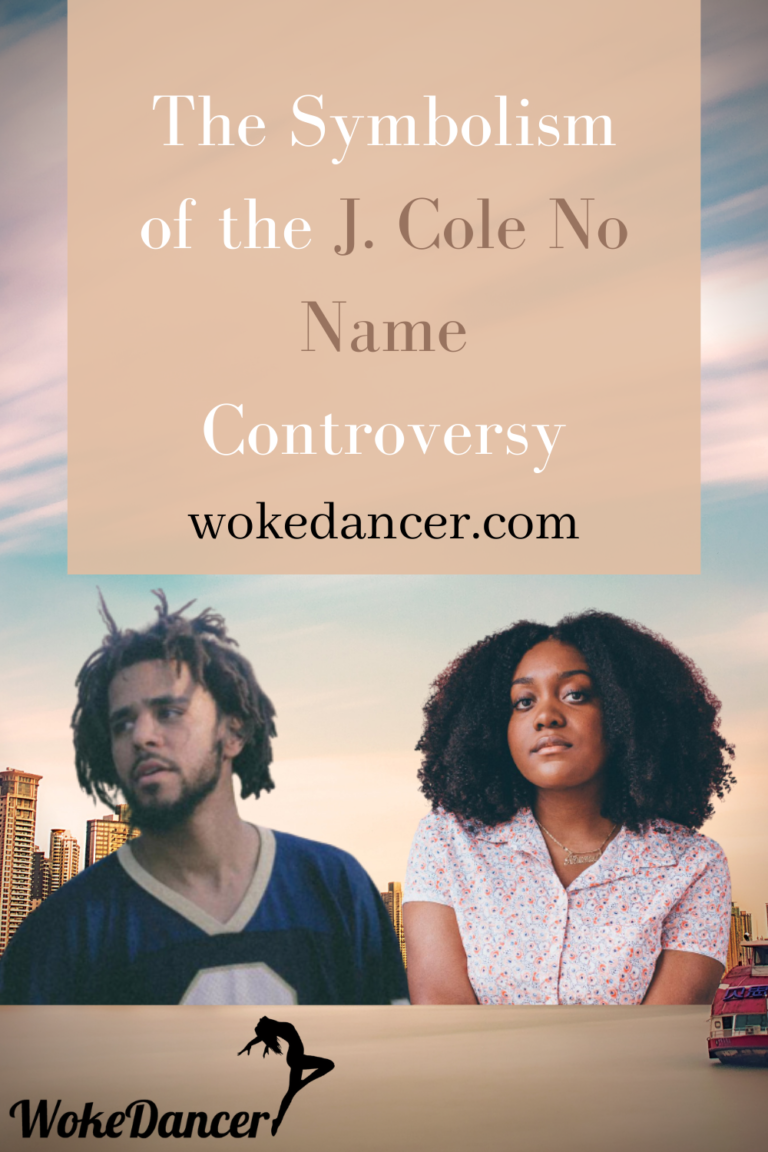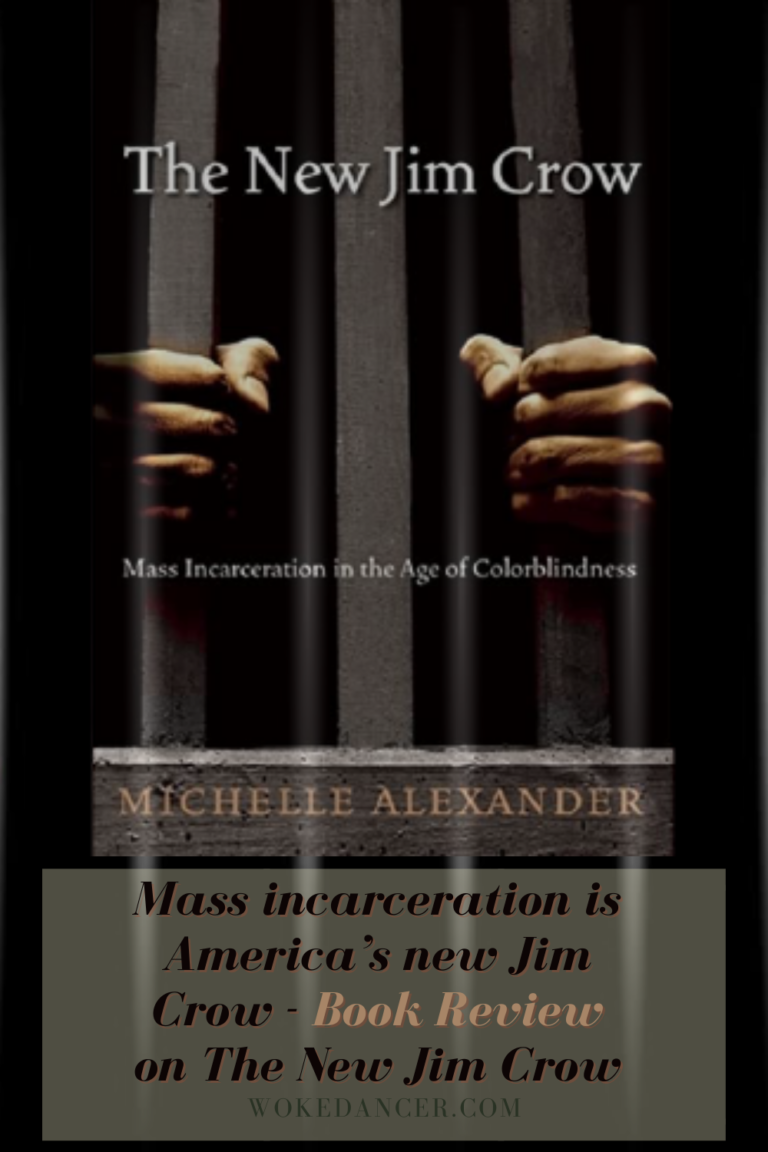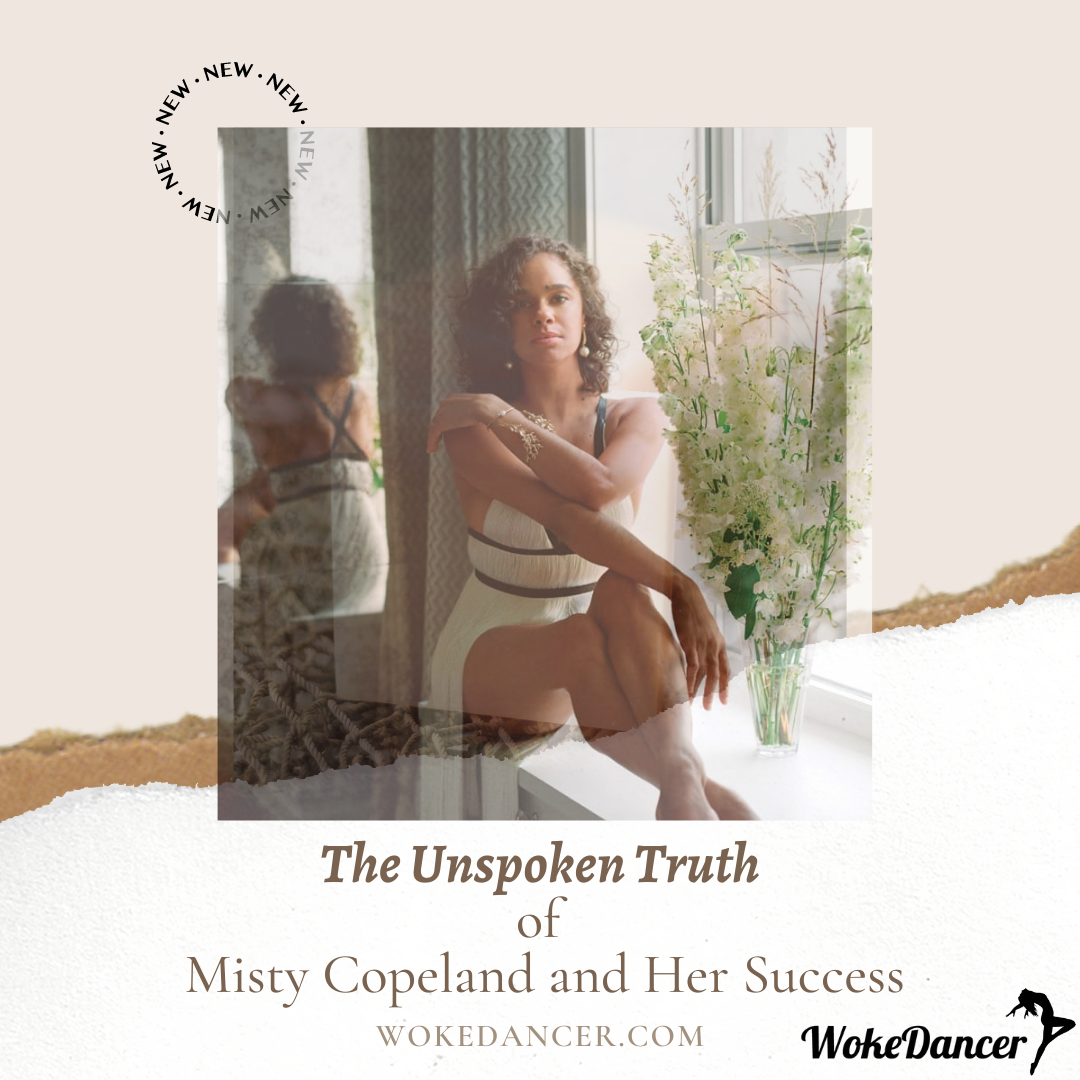
The Unspoken Truth about Misty Copeland and Her Success
When you’re Black in a White space, the issues are not so Black and White.
If you Google search “most well known american principal ballerina”, whose name appears first?
Misty Copeland has inspired millions of Black dancers to pursue ballet all over the world. This is especially powerful when young Black dancers have never in their lives seen a Principal Black dancer of that caliber or level of popularity. Misty Copeland’s story lives on in the hearts of young Black dancers everywhere.
Copeland has, in fact, been a trailblazer in the ballet world ever since she was a teenager. From picking it up at thirteen to going en pointe within three months (something that takes most dancers two to fours years to do), she seemed unstoppable. Two years later, she landed a spot at her first summer intensive at San Francisco Ballet. Two years. She was called a dance prodigy.
A few years later, she landed what only a select few hope to achieve in their lifetime: a place at a professional ballet company. At American Ballet Theatre, no less. The numbers are even less for Black women who make it into the ballet world professionally. As impressive as Copeland’s accomplishments are, this fact is a problem. Misty Copeland’s success is an example of the wider scope of what happens when one Black woman is allowed to be in the spotlight at a time.
The Problem with Black Tokenism
Starting ballet at thirteen and developing that quickly is highly unusual and impressive. As well, to rise to the difficult task of principal dancer is nothing short of a miracle. Copeland earned everything she has received, but how does her Blackness and her story come into play in this equation?
The truth of the matter is that she inspired so many Black children all over the world for one big reason. It is because she was maintaining Black tokenism in predominantly White spaces.
On an individual level, this seems like a harsh assessment. No one should base their choices of where they want to pursue their passions solely upon race. Misty Copeland is not a martyr for the Black dance community in America nor the world. Copeland is very racially aware of steps that still need to be taken in the ballet world, so I don’t want to press her choices as an individual.
However, on an interconnected level, the implications of her success can have an uncomfortable relationship with Black dancers in America. Although Copeland’s success was earned, where were the Black principal dancers before her? Where was their similar status and acclaim? There were no Black principal dancers at ABT in its 75-year history. Were the White dancers just inherently better than other Black dancers auditioning? Of course not.
The Jackie Robinson Effect
Jackie Robinson was the first Black man to play baseball in the Major Leagues. He began his journey, however, in the Negro Leagues, a highly successful and profitable league. A league that arguably was on its way to surpass the Major Leagues in profit and popularity.
I’m sure he didn’t intend for other Black baseball players to follow suit when he left the Negro Leagues for the Major Leagues. Which subsequently led to the Negro League going out of business. But to me, he was a calculated pawn in a White man’s game. I believe this because a Dodgers manager actually came to him personally, which gives me the idea that he was “poached” with a certain ulterior motive. That is, get the Negro Leagues out of the way so the Major Leagues can thrive. Yay for integration, I suppose.
He was the token Black in a White space.
Many followed his path, and yet most of them ended up on the bench, never as popular as their predecessor. In the process, thousands of people lost their jobs, their pride, and their safety. All for one person being used in a system that does not serve and will never serve Black people in America. In White spaces, Black people are pawns whether they’re aware of it or not.
“There’s power in our choices as a collective, and the major successes and critical acclaim of companies such as Dance Theatre of Harlem and Alvin Ailey prove that.”
This isn’t to say that Copeland has caused financial turmoil in Black-owned dance companies. It’s just a fact that if she were to dance at a company serving Black dancers – such as the Dance Theatre of Harlem – her popularity just wouldn’t have been the same. This is because she would’ve been surrounded by other talented Black dancers. She wouldn’t have been the exception. The first. I’m not sure if Misty Copeland would be as well-known as she is today had she chosen a predominantly Black dance company.
As I watched Copeland’s documentary – The Ballerina’s Tale – a few months ago (almost two years after reading her biography), I couldn’t help but see her story a bit differently as I’ve gotten older. She wanted to be an inspiration to Black dancers and show that we are capable of dancing in these White spaces, but who are we trying to prove this to? Semi-racist culture gatekeepers, their industry, or to ourselves?
She says the ballet industry has a race problem, but why should it be a problem to Black dancers if we can just create our own ballet companies and industry? It seems as if “Black-owned” just isn’t good enough for Black people. Black Americans struggle to have a voice in a society that has deemed us voiceless, and therefore we seem nonexistent.
Why do we – as Black people – not acknowledge our own success unless it’s attached to Whiteness? According to interviews from A Ballerina’s Tale, most Black people have never even been to the Met or seen a ballet until Misty Copeland was performing with a White company. It seems that instances like this may explain a connection between underfunded Black dance companies and tokenism.
Race theoretically shouldn’t be a factor in choosing a company, but it is. Black people didn’t create it; we just have to live with it. It seems like breaking barriers only works for one Black man and woman for one generation at a time. I just don’t think we should have to settle for that.
There’s power in our choices as a collective, and the major successes and critical acclaim of companies such as Dance Theatre of Harlem and Alvin Ailey prove that. When Misty Copeland’s success fills the dance world, I believe some of these Black dance companies lose that power. It’s a message that our success is only valid when it’s with White organizations, and that can be unintentionally psychologically damaging for majority Black organizations. (Just look at the HBCU vs. PWI debates).
She broke barriers at American Ballet Theatre, but the bitter pill is: why would you even want to?
Misty Copeland: a marketing machine
Misty’s manager and publicist – Gilda Squire – has crafted Misty’s perception to perfection. These two were acquainted in 2011, and besides her time with Prince, Misty wasn’t as well-known to the public eye back then. It’s no surprise she was pumped to high brands and interviews after these two had formed a relationship.
Copeland was primed and prepped with amazing PR. She had a strong narrative of “breaking barriers” as a Black ballerina charged with changing the racist norms in the ballet world. It seemed entirely positive: race being a topic of empowerment, and not one of shame.
Media is power, and perception rules how the world moves, and how money flows within it. Squire understood this, and used the media as a tool to facilitate the process to break the “glass ceiling” for Misty Copeland. To ultimately give Misty her dreams of becoming a principal dancer and world-class appreciation. Her rise to fame was most certainly calculated, and this is also a truth many tend to forget about.
American Ballet Theatre is a business first, and Copeland’s crossover success with the general public was an automatic diversity ticket thus a cash cow for their company.
She’s extremely talented and skilled, but so are many others. What Misty had was a marketable story and a strong brand. That’s how her success came to its highest potential. Being Black is just what made the story stick, in my opinion.
There can only be one at a time
Some of Copeland’s biggest moments in her career – from a media perspective – were two things.
The first was when she danced “Firebird”. It was then claimed that she was the first Black ballerina to dance this ballet at an international classical ballet company.
However, she was not the first Black ballerina to dance “Firebird” at an international classical ballet company. A Black ballerina named Stephanie Dabney from Dance Theatre of Harlem was the first.
The Dance Theatre of Harlem was and still is an international, neo-classical ballet company. Before the Dance Theatre of Harlem went on a financial hiatus from 2004-2012, they were touring nationally and internationally. They also had a repertoire of Balanchine’s renowned ballets. This was huge. In the 70s and 80s, they were on the same level artistically and technically as the American Ballet Theatre. They stood tall next to ABT, but their history has become a footnote in history and the media.

In addition to that, Copeland may have been the first Black Principal dancer at American Ballet Theatre, but she was not the first Black Principal dancer at an international ballet company. Debra Austin was the first.
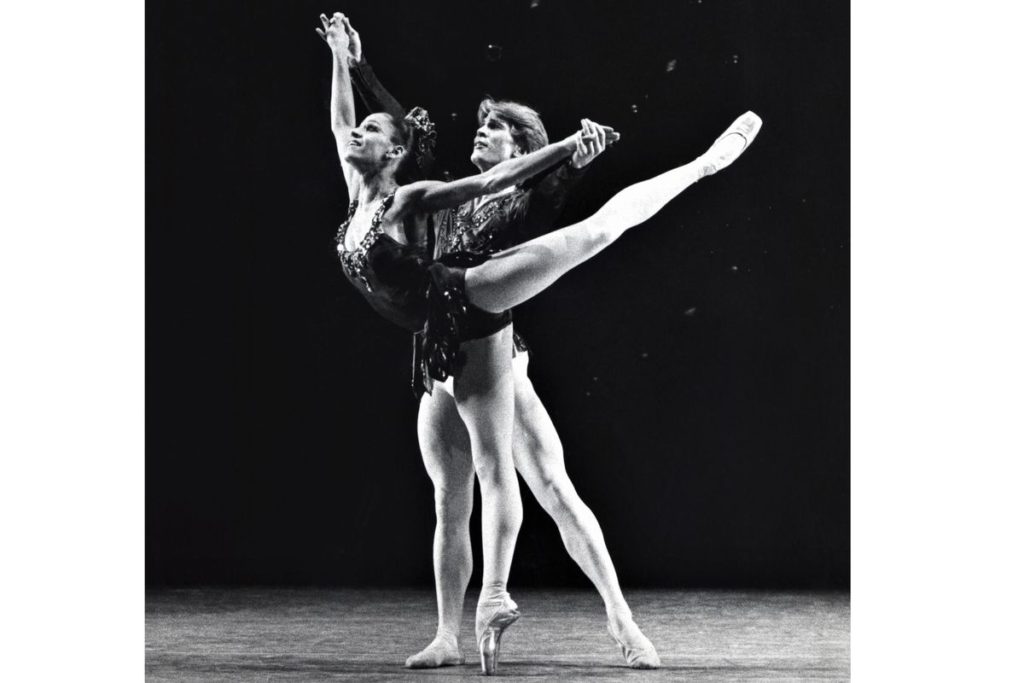
This has since been acknowledged in Copeland’s documentary, A Ballerina’s Tale, but the message has already been solidified. Her perception – the perception that was created for her – was solidified. The media and history books need to acknowledge these facts as loud as they acknowledge Misty and her success. Because when young Black dancers look up at Misty, they may feel like she was just an exception to the rule, not the rule itself.
Misty’s enchanting story can often be misleading when they do not include the ones that came before in an equally impactful way. I do appreciate Misty Copeland always making sure she mentions these women and includes them with her in big moments. It shows genuine concern and responsibility for her success. She teaches and works with young Black dancers all over the world, but she can only do so much. This just illustrates that perception is stronger than the person.
Final thoughts on Misty’s symbolism to the dance community (and the world)
Regardless of the effects of Copeland’s success psychologically or otherwise, her symbolism overall is so essential for this generation of new Black dancers. Copeland herself has always been an educator of the Black ballerinas and dancers that have created a way for her to be here.
She uses her cross-over appeal to share ballet with the world, and reinvent the image of the ballerina. To share to the Black dancers that they can shine despite having been held back solely because of their race, and not their talent. Misty’s images allows Black dancers to see themselves beyond the myths their teachers, other dancers, and their parents have told them. Her story of dealing with race and adversity then overcoming it to this magnitude is absolutely inspiring. There is power in her image as an international Black dancer, advocate, and brand ambassador.
In her time at American Ballet Theatre, she has gained national and international notoriety and acclaim, brand deals, children’s books, work with dance organizations and nonprofits, and the most iconic: the opportunity to dance as a soloist for Prince. She has become a “famous” ballerina, which is such a rarity in the delicate and traditional culture of ballet.
It should also be noted all of the racism she endures quietly that we don’t see for the sake of something bigger than herself. There’s a reason she’s inspirational; she cares about others deeply. I really admire Misty Copeland for that. This is a criticism on White supremacy permeating Black existence in America and the world – especially ballet – as well the power of controlling your perception in history. Make no mistake, her success is warranted, but it wouldn’t have been as extensive as it was if she didn’t have the right manager, the right story, and the right timing. This is the truth.
It’s just unfortunate that we have to keep taking small steps toward integration when Black people can be miles ahead or at the same caliber of companies like ABT if we had the same financial backing and perception from dancers (Black and otherwise) to do so.
Tags: misty copeland, black ballerina, dance, ballet
Fun fact: The names of the two Black women that danced at American Ballet Theatre are Nora Kimball and Anna Benna Sims.
Sources:
- https://www.cnn.com/2018/05/21/us/misty-copeland-ballet-race-boss-files
- http://mybodymyimage.org/the-misty-rious-case-of-the-vanishing-ballerinas-of-color-where-have-all-the-others-gone/
- https://www.mlb.com/news/jackie-robinson-success-decline-of-negro-leagues
- Dirty Little Secrets by Claud Anderson, E.d.
- https://www.nytimes.com/2021/04/14/sports/baseball/jackie-robinson-day.html
- https://www.dancetheatreofharlem.org/our-history/
- https://www.themuse.com/advice/lauren-anderson-trailblazer-first-african-american-principal-dancer-houston-ballet
- https://www.dancetheatreofharlem.org/our-history/#:~:text=Dance%20Theatre%20of%20Harlem%20went,brown%20ballerinas%2C%E2%80%9D%20Johnson%20says
- http://amsterdamnews.com/news/2017/jun/15/gilda-squire-woman-behind-misty-copeland/
- https://mobballet.org/index.php/2017/09/05/stephanie-dabney/
- https://www.powerpointe.net/single-post/catch-the-stream-dance-theatre-of-harlem-hosts-firebird-day-celebrating-the-iconic-firebird-ballet
More content like this here.

